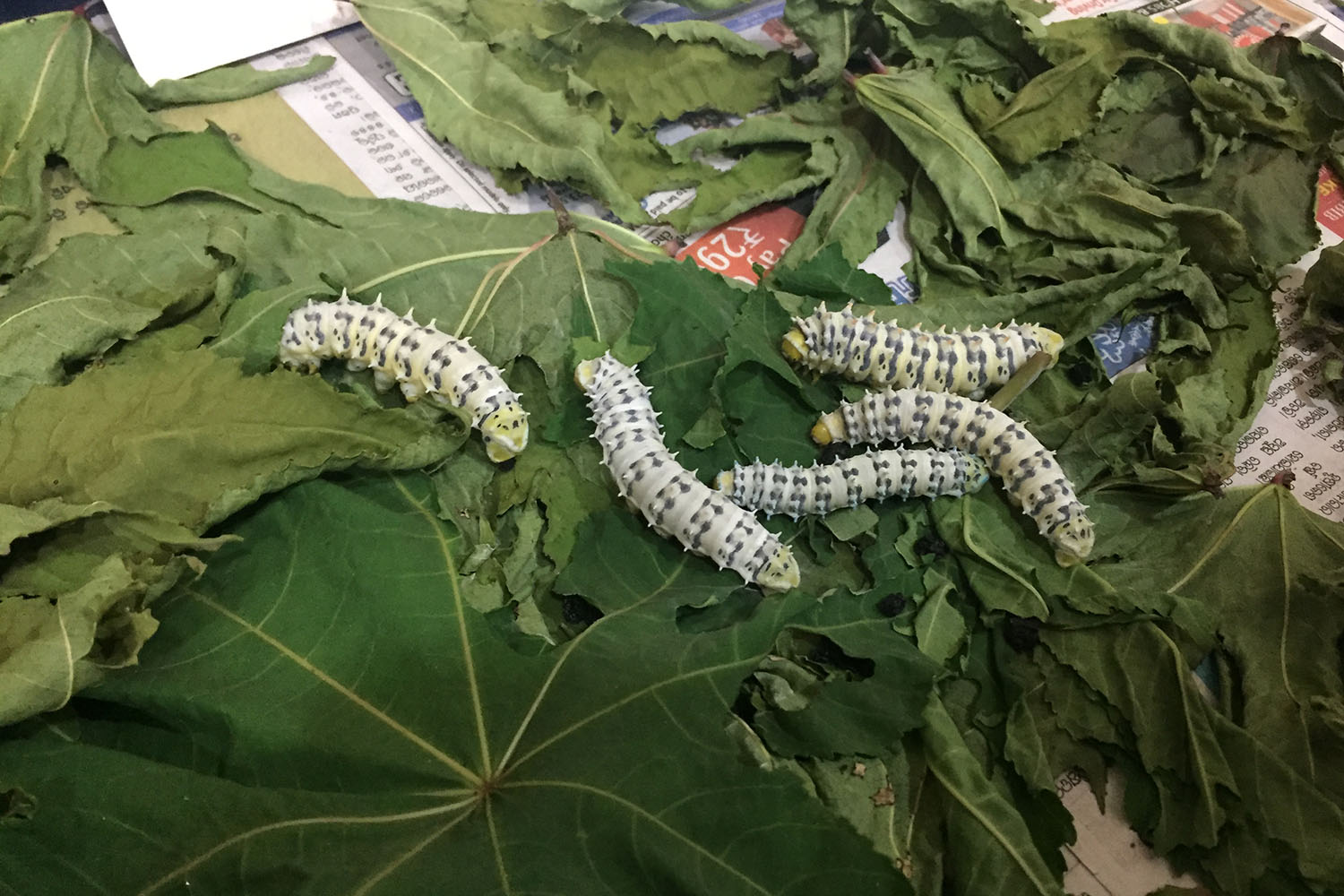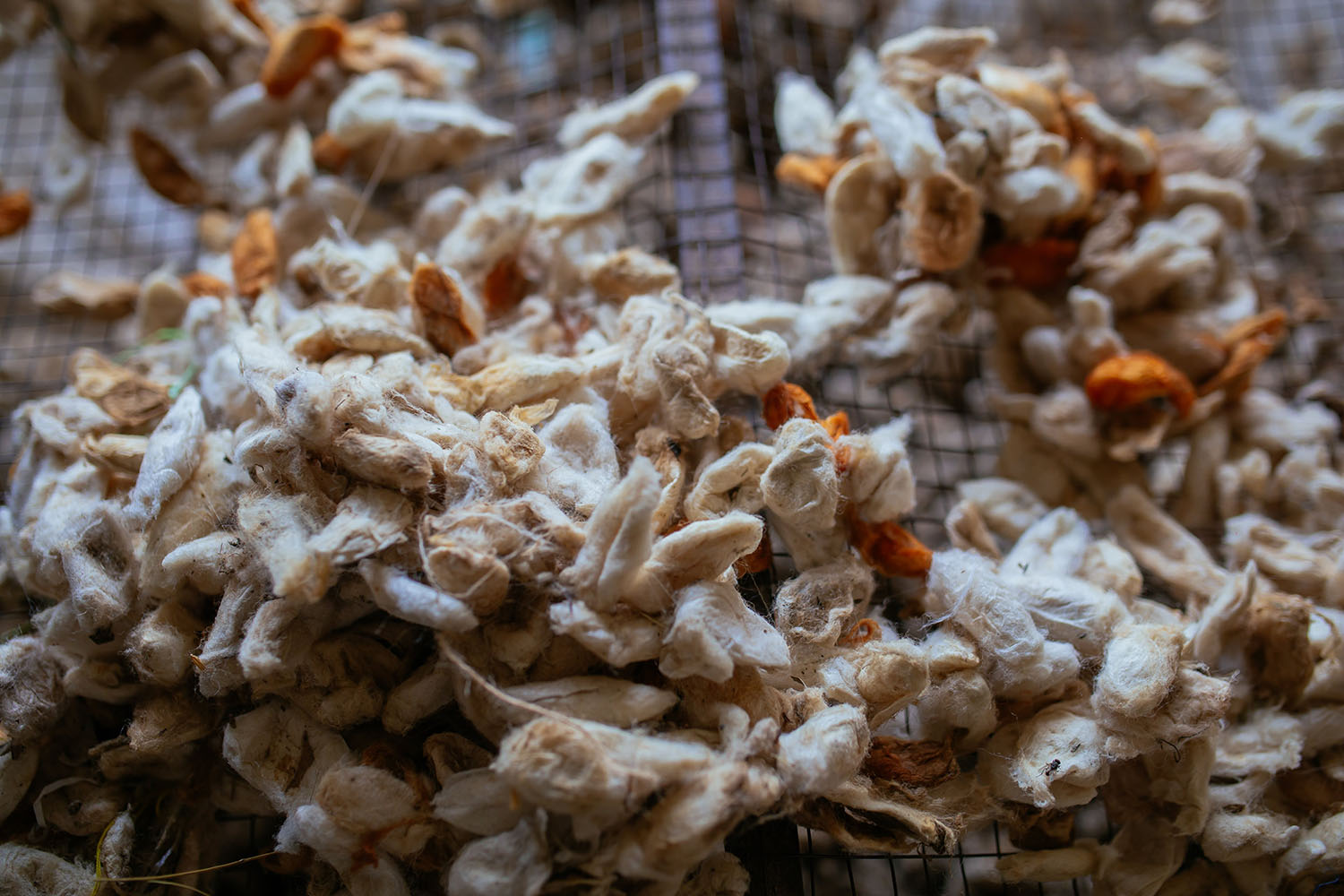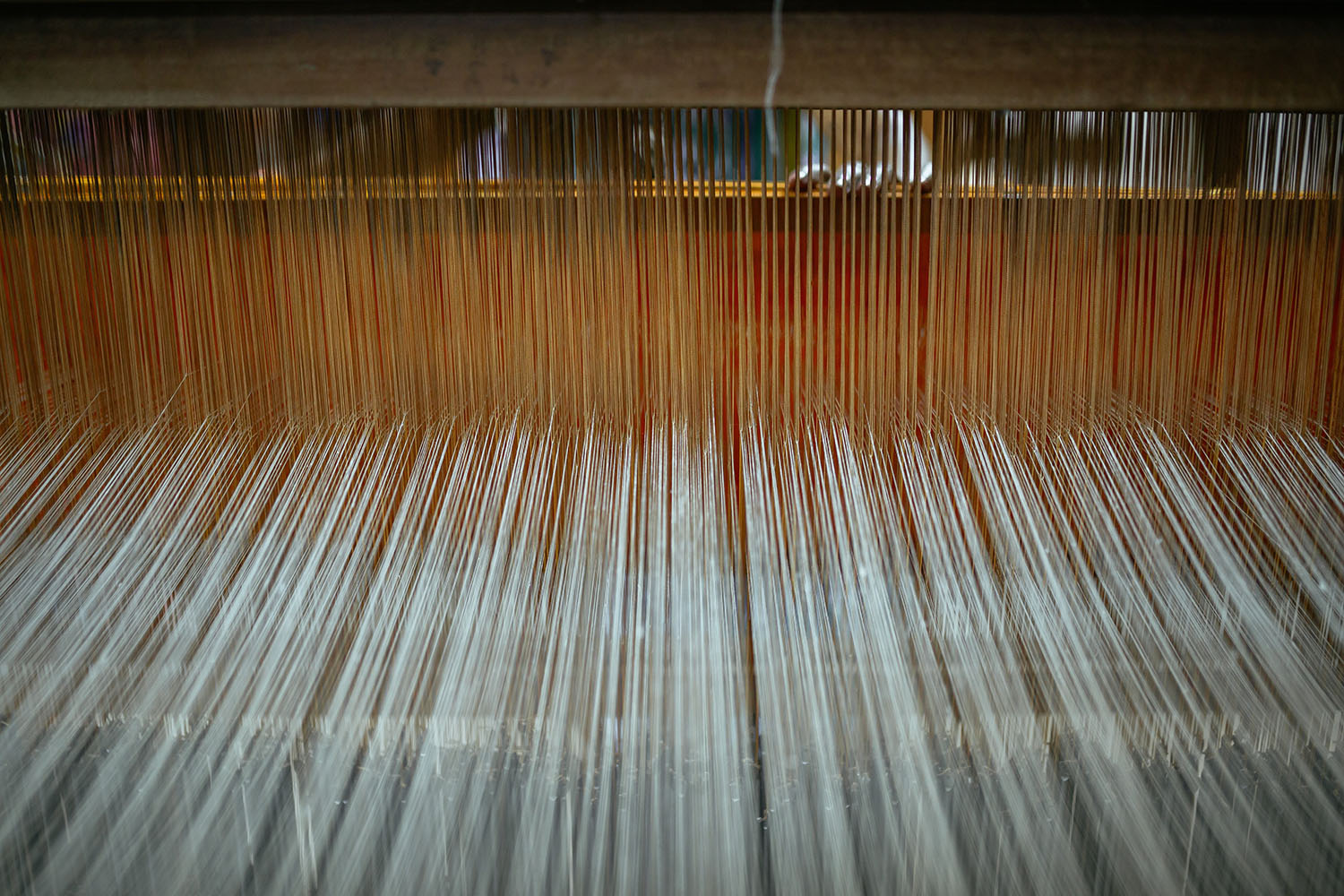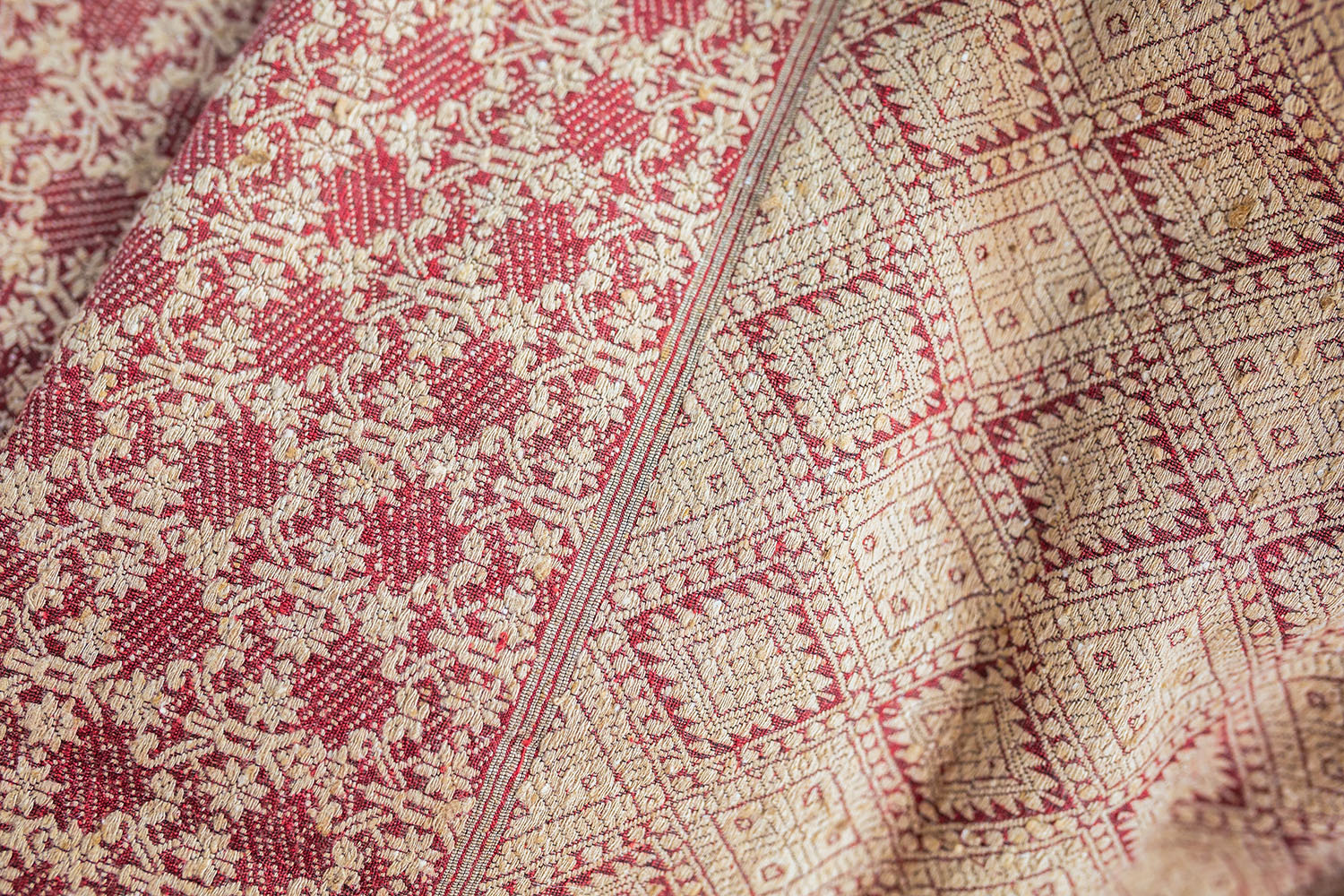ARTICLE
Eri Silk
Derived from the cocoons of the Philosamia ricini silkworm, eri silk is named after the Assamese word erranda meaning castor plant, the worm’s primary food source. Because it is extracted without boiling the worm, it is also known as ahimsa (non-violent) silk and remains the only domesticated silkworm native to India. It is mainly reared and processed by the women of the Bodo, Mishing, Monpa, Khasi and other communities in Assam, Arunachal Pradesh and Meghalaya, where the worm is predominantly found.
Finished eri silk is soft, warm and white to faintly gold in colour, except for the rust-red variety from Kokrajhar, Assam. Such variations in colour and texture, aside from dyes and differences in process, are the result of selectively breeding the eri worm. The silkworm is reared indoors and fed on castor leaves for thirty days in preparation for metamorphosis. For another fifteen days, it spins its cocoon, leaving a small hole through which the newly formed moth emerges and departs. By its nature, the raw silk fibre of the cocoon is not produced as a single, continuous filament like mulberry silk, but a series of entangled pieces of slightly varying thickness. This is the primary reason why the worm is not boiled during degumming, and why the fibre is spun like wool rather than reeled like other silks. The aggregate filament length of an eri cocoon is 400–500 metres, a third of the average mulberry silk filament and the fibres are finer towards the outer layers of the cocoon, ranging in fineness between four and seven deniers. For the traditional degumming process, the cocoons are bundled in a cotton cloth and boiled in a solution of water and a small amount of soda or ash from plant material, after which they are opened, flattened into sheets and joined together. These are dried, then spun into yarn on the takli or in some cases a motorised spindle, after which the eri silk is ready for weaving.
As the awareness and demand for authentic eri silk goods have increased in recent years, traditional spinners have been encouraged to augment their process to become more efficient. The Central Silk Technological Research Institute (CSTRI) has introduced spinning machines among eri spinners in Assam to replace the takli and reduce wastage of the softer cocoons and Sericulture Information Linkages And Knowledge System (SILKS) is making efforts to standardise the boiling solution recipe and degumming process among spinners to ensure uniform production in the industry and adapt their methods for the new spindles. Brands and organisations like we are KAL in Assam and Muezart in Meghalaya, are working with eri artisans to sustain traditional practices while catering to local and international demand for the silk. While mechanisation programs seek to reduce the time taken to spin the eri thread, traditional hand spinning methods, when applied consciously, have been more economical with the cocoons and have yielded better quality yarn.
Bibliography
Our website is currently undergoing maintenance and re-design, due to which we have had to take down some of our bibliographies. While these will be re-published shortly, you can request references for specific articles by writing to hellomapacademy@map-india.org.










